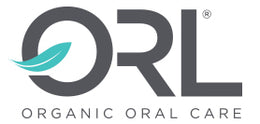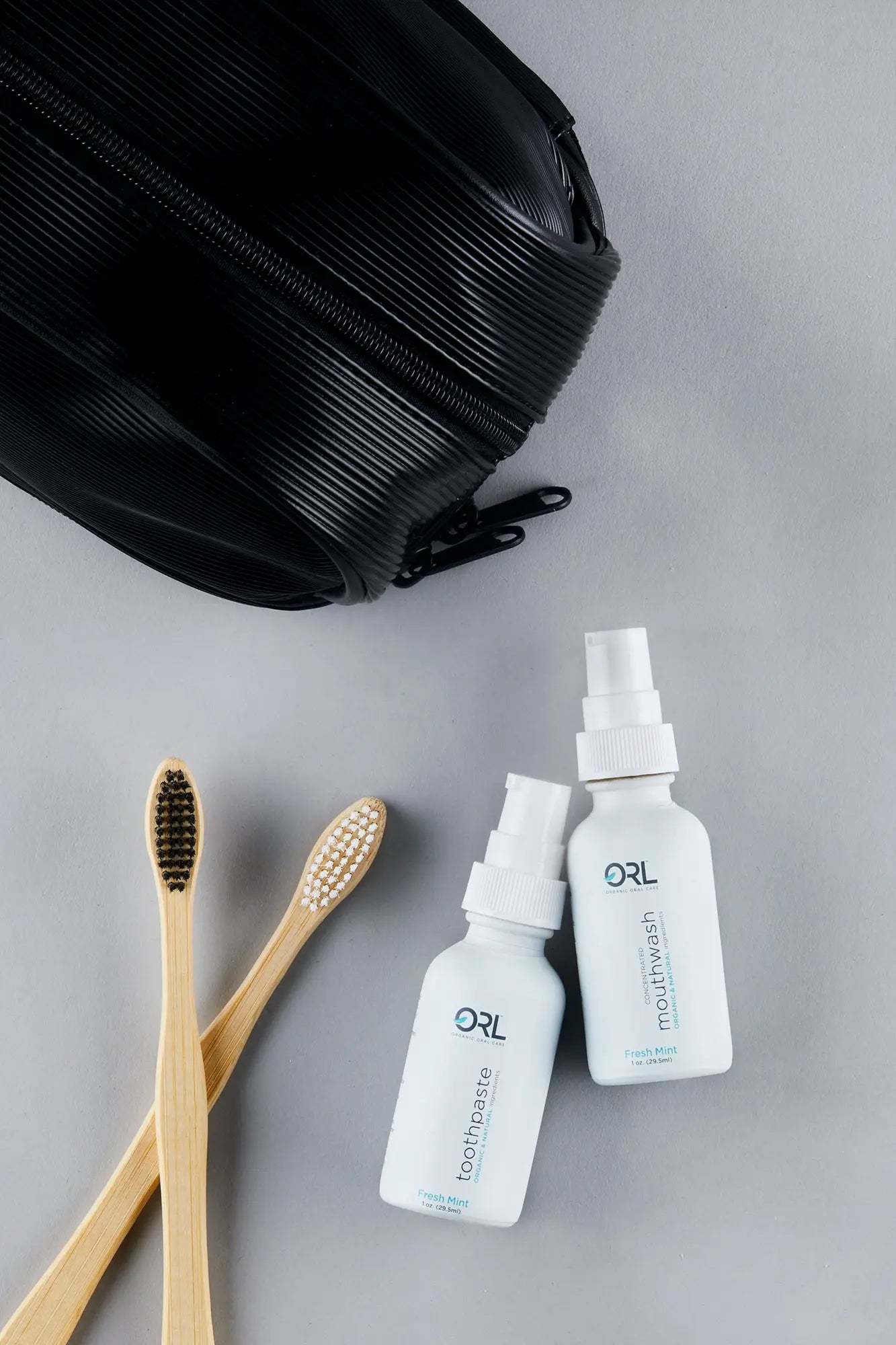Let’s be realistic. Your blood probably ran cold the second you saw the title of this article. Almost two-thirds of coffee drinkers say they literally can’t function without coffee per a recent survey. Huge swaths of coffee drinkers are willing to give up TV, the internet, bathing, and even their significant others before hanging up their mugs too. If coffee is ruining your teeth, you may already be plotting out how to fit dentures into your budget. Sure… your teeth allow you to eat, help you speak, and give you a beaming smile that can light up a room (after a few cups, of course), but if it came down to choosing, we all know which side you’d be on.
The good news is, you don’t have to choose. There’s some truth in many of the rumors you’ve heard about coffee causing teeth problems but most of them can be overcome once you understand the science behind them. On this page, we’ll do a deep dive into how coffee impacts your teeth and how you can protect your smile (and keep your coffee) with just a few simple steps.
You’ll learn the answers to:
- Is Coffee Bad for Teeth?
- Can Coffee Stain Teeth?
- Do Coffee Grounds Whiten Teeth?
- Can Coffee-Stained Teeth Be Whitened?
- Can Coffee Weaken Teeth?
- Can Coffee Make Teeth Sensitive?
- Why Does Coffee Taste Bad After Brushing Your Teeth?
So, grab a cup and pull up a seat. Class is in session.
How Your Teeth Work
Most of us think we know the components of a healthy smile (brush, floss, dentist, repeat), but there’s a lot more going on in your mouth than that. To maintain optimal oral health, you need to check off all the boxes or things start falling apart sort of like a set of dominoes. For that reason, we’re going to start with a crash course in cavities and staining before digging into the role coffee plays.
How Cavities are Formed
Your oral environment isn’t static; it’s constantly changing. Two areas of special concern are pH and bacteria. They work together for or against you in maintaining oral health.
Changes in pH impact demineralization.
You’ve heard it’s bad to have an acidic mouth, but what exactly does that mean? A healthy mouth usually has around a 7.0 pH. It’s neutral; not acidic and not alkaline. When it drops to about a 5.5 pH or lower—into the acidic range—the minerals that keep your teeth strong begin to leave your teeth.
It doesn’t take much to tip the scale, either. Coffee has a 5.0 pH, while flavored waters, citrus drinks, and soda are around 2.0-3.5. Perhaps more alarming, certain toothpastes have tested as low as a 4.22 pH. In other words, many of the very things you do to stay healthy are actually terrible for your teeth and can increase demineralization.
You might recognize these demineralized areas as white spots on your teeth. The process is also known as decalcification and it leaves your teeth vulnerable to decay. Once a spot appears, the likelihood of developing a cavity is so high that it’s referred to as a precarious lesion or pre-cavity. Some dentists recommend fillings at this stage to ensure a cavity doesn’t get the opportunity to take hold.
However, just as your teeth will demineralize in an acidic environment, they’ll remineralize in a neutral or alkaline one. That means if you want to keep your teeth cavity-free, one of the best things you can do is minimize the amount of time your oral pH dips below 7.0 and try to restore balance as soon as possible when the inevitable drop happens. You can also increase minerals in your saliva, so your teeth are bathed in nourishment and naturally pick them up when the environment is right.
pH impacts acid wear.
Another major issue is that the enamel on your teeth softens in an acidic environment. The enamel doesn’t stay soft for long—only during the acid attack. Within 30-60 minutes, acid levels will generally reduce to normal in a healthy mouth.
However, many of us sip on acidic beverages for hours at a time (or the whole morning… or all day!) and some of us brush right after consuming something acidic when the enamel is still soft. This can remove small amounts of enamel, which makes teeth sensitive and increases the risk of decay. Once the enamel is gone, it cannot be repaired or rebuilt.
Bacteria play a role too.
Most dental health articles focus on the role bacteria play. It causes cavities, bad breath, and disease. Plus, bacteria create more bacteria and make your mouth acidic. This may all be true, but not all bacteria behave the same. Your digestive system, for example, relies on certain strains of bacteria to digest food. You’re probably keenly aware of how a course of antibiotics impacts your stomach too. It’s not fun. There are similar implications for your mouth. Specific strains are vital to your oral health. They keep the “bad” cavity-causing bacteria in check and help maintain balance, so you have fresher breath too.
For this reason, experts say you shouldn’t kill all bacteria indiscriminately. You should nurture healthy bacteria and try to diminish the strains that cause cavities and bad breath. Alcohol-based mouthwashes and sprays, which many people use for a quick refresh between brushes, are a double-whammy in this respect. Not only do they kill all bacteria, which coincidentally gives the “bad” bacteria a leg up when recolonizing, but they also dry your mouth out.
See the problem? Under ordinary circumstances, a well-meaning person could easily rob their teeth of a fortifying mineral bath and overwhelm their mouth with “bad” bacteria by doing something they think is healthy.
Disease is influenced by pH and bacteria.
Cavities aren’t the only thing that put your smile at risk. Known as gingivitis in the early stages and periodontitis or periodontal disease in the later stages, gum disease can rob you of a healthy smile too. It generally starts with mild symptoms like tender, inflamed, and bleeding gums. As it progresses, the gums begin to pull away from the teeth, leaving pockets bacteria thrive in. These localized infections eat away at neighboring structures, including bone, and will eventually result in tooth loss if untreated.
Scientists find that people with periodontitis have a 6.85 oral pH on average. That’s not surprising because bacteria thrive in an acidic environment. However, veering too much in the opposite direction isn’t good either. Research shows those with gingivitis have an average pH of 7.24.
In other words, balance is key to your oral health. To prevent disease and decay, you want to stay as close to a neutral 7.0 pH as much as possible for as long as possible.
How Teeth Stains Form
Let’s do a crash course on tooth anatomy first. In the center of your tooth is the pulp. It’s the vital (living) part of the tooth that’s made up of blood vessels and nerves. If you’ve ever had a toothache, you know this all too well. And, if you’ve ever had a root canal, you’ve also seen firsthand how removing the pulp can eliminate pain.
Mother Nature was meticulous with tooth design though. Under ordinary circumstances, blood flow to the tooth keeps the pulp chamber clean and supplies the tooth with nourishment. To protect that sensitive pulp, she added two tooth layers over the top as well.
The innermost layer is dentin. It usually starts as a light-yellow color and then darkens with age. It’s also vital, meaning it can repair itself to some degree as long as the pulp is healthy and continues supplying blood. If you look at a cross-section of dentin under a microscope, it looks a bit like a sponge. It’s calcified and not spongy at all, but it is filled with tiny holes called tubules.
The outermost layer is your enamel. It’s the hardest part of the tooth and is normally a whitish hue, but it’s also quite translucent. That allows the color of the dentin to come through some. Enamel is also somewhat porous, but the pores stay plugged most of the time. Few things can disrupt the plugs, but certain dental procedures, such as whitening, can.
Teeth Can Stain Externally
Throughout the normal course of your day, a biofilm develops on your teeth. This sticky layer is loaded with bacteria and their byproducts. It’s what you’re removing when you brush and why it’s important to scrub the full two minutes. Anything that’s left behind for an extended period hardens into calculus, also known as tartar. Biofilm is also a stain magnet too.
Removing external/extrinsic stains can be easy.
Anything you eat or drink can discolor biofilm, but thorough brushing usually removes it. Research shows xylitol can help inhibit biofilm development too. Once it hardens into calculus, though, only your hygienist can remove it.
Home whiteners are usually abrasive or illusionists.
We recently covered abrasives in our article on the safety of charcoal toothpastes. The short version is, most at-home whiteners are more abrasive than traditional toothpaste in an effort to scrape away biofilm. These come with inherent risks. They can damage the enamel and often have a very low pH which can put your teeth at risk too. Others contain a blue pigment which doesn’t truly whiten your teeth but makes them look whiter instead.
You’ll need to visit your dentist for help with stubborn extrinsic stains.
Particularly stubborn external stains can also be powered away with professional whitening systems available through your dentist. They work by opening your tubules and oxidizing your teeth to remove stains. The active ingredient is usually peroxide or similar. There are over-the-counter kits like whitening strips and gels that leverage peroxide too. However, they aren’t as strong as what your dentist can provide and the results are very much a mixed bag. Plus, if they do work, they’re likely disrupting the plugs in your tubules. That means every day you’re wearing them to whiten, you’re reopening the pathway into your teeth and allowing things that can cause stains to permeate. Yes—you’re literally undoing all your hard work immediately after.
It’s best to consult with your dentist if you’re contemplating one of the more intensive whiteners. There are many contraindications and if you like to indulge in teeth-staining beverages, you’ll want to get your whitening done in one session rather than extending it to avoid undoing your work.
Teeth Can Stain Internally
Internal teeth stains are rarer and are harder to remove. Internal stains develop from daily habits. That window in which enamel softens from acid also allows stains to penetrate to some degree. Medications, old filings, and other conditions can cause internal stains as well. Plus, the hue of your dentin darkens with age, which can make your teeth look darker too.
Internal/ intrinsic stains require your dentist’s help.
Intrinsic stains can only be removed by your dentist. Depending on the type of stain, a professional whitening system may be enough. However, sometimes dentists can perform a special whitening procedure on a single tooth if only one area is impacted.
Coffee vs Teeth: FAQ
Now that you’re familiar with the mechanisms behind healthy teeth and staining, we’ll dig into some coffee-related FAQ.
Can Coffee Stain Teeth?
Absolutely. The general rule is that if something can stain your shirt, it can stain your teeth. Coffee is a major stain culprit for a multitude of reasons. First, it naturally has deep pigmentation. It’s also acidic, which means it’s more likely to penetrate beyond surface stains too. On top of this, it contains tannins. These plant-based compounds also make it easier for stains to adhere to your teeth, so you’re more susceptible to coffee stains and stains from anything you consume along with your cup of Joe.
Even though tea generally has far more tannins, coffee is no slouch. Regular coffee drinkers often report having yellowish or even brown teeth as the years go by.
Can Coffee-Stained Teeth Be Whitened?
Yes. As we explored earlier in the section on how stains occur, there are many ways to whiten coffee-stained teeth. First, make sure you’re brushing and flossing regularly to eliminate biofilm and use a product that contains xylitol. You should also visit the dentist regularly for cleanings and checkups. If your teeth still look dingy after a professional cleaning, ask your dentist to advise you on which whitening process is best for your unique situation.
Do Coffee Grounds Whiten Teeth?
People are always looking for natural teeth whiteners but using coffee to whiten teeth is a bit of an obscure idea. Agriculture experts say coffee grounds can actually be used in weed abrading. The process basically involves shooting coffee grounds out of an air gun at a high rate of speed to maim and kill weeds without using chemicals. So, while that does lend credence to the idea that coffee grounds might whiten teeth by scrubbing away stains, it should set off other alarm bells that it can be damaging to your teeth and gums. When you add on concerns like acidity, pigment, and tannins, it’s pretty clear trying to whiten your teeth with coffee grounds is a bad idea.
Can Coffee Weaken Teeth?
Yes and no. Your teeth demineralize when they’re in an acidic environment. Continued exposure without rebalancing and giving your teeth time to remineralize can certainly make them more susceptible to decay. You can minimize the risk by drinking your coffee all at once, drinking through a straw, and neutralizing your pH after drinking coffee.
The other challenge is that many people drink their morning coffee while getting ready for work and then brush right after so they’re fresh for the office. Because your enamel is softer during this window, brushing can wear away some of your enamel, which weakens your teeth. If you’re going to go this route, always neutralize the environment first. Using a mouthwash with a 7.0 pH can help, but you may be even better off brushing before coffee and then neutralizing with an alcohol-free 7.0 pH mouthwash after.
Can Coffee Make Teeth Sensitive?
Yes and no. Your enamel layer helps protect the pulp, so when it’s thinned through acid erosion, the pulp is going to feel more sensations. You’re certainly going to have more sensitive teeth if you have cavities too. So, while coffee by itself isn’t likely to create sensitivity, the issues that kick off when you drink a latte can result in sensitivity. If you’re experiencing any kind of tooth sensitivity, no matter what you think the cause is, discuss it with your dentist. He’ll need to perform an exam to find out what’s going on and provide you with advice tailored to your situation.
Why Does Coffee Taste Bad After Brushing Your Teeth?
You can blame Sodium Lauryl Sulfate (SLS) for the awful taste you get if you brush your teeth before you drink coffee or orange juice. Toothpaste manufacturers sometimes include it in their products to make them slippery or to help the product glide over surfaces, but it messes with your ability to taste and can bring out bitter flavors more. It’s one of many ingredients ORL does not include in any of its products and comes with a host of PubChem warnings. If you’re not sure if it’s in your toothpaste, use our Compare Tool to check.
Bottom Line: Is Coffee Bad for Teeth?
Coffee isn’t any worse for your teeth than any other acidic beverage. In fact, it’s “better” than sodas, energy drinks, and citrus. BUT, it will still lower your oral pH, which can result in demineralization. If you drink coffee all day, your mouth will be acidic most of the time and demineralization can be quite extensive. The problem will worsen if you do things like brush your teeth without precautions right after drinking coffee or if you use things like alcohol-based mouthwashes.
With that in mind, it’s safer to stick to a regimen that includes oral health care products that neutralize acids and contain wholesome ingredients such as xylitol, vitamins, and minerals. And, if you reach for breath spray between cups, choose one that fits these criteria too.
Love Coffee? Keep Your Smile Healthy with ORL
ORL oral health products are designed with a perfectly neutral 7.0 pH and are made with the ingredients your smile craves. There’s organic xylitol to kill “bad” bacteria and inhibit biofilm, plus a host of vitamins and minerals so your smile is fortified naturally. You’ll also get pops of mouth-watering flavor with plant-based essential oils that nourish and leave your mouth with a unique clean feeling you won’t find anywhere else. Head to our online catalog to explore natural toothpaste, mouthwash, and breath spray now.



